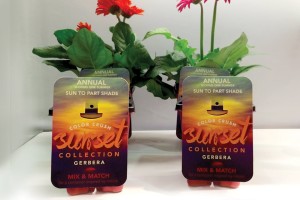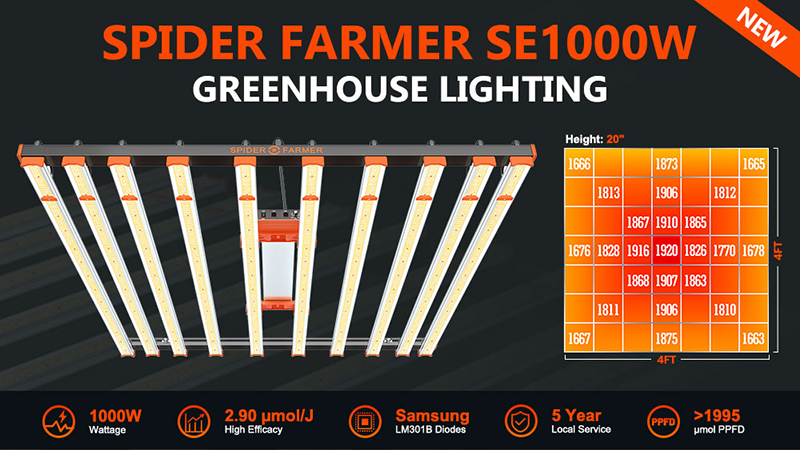MasterTag Integrates Technology Into Plant Tags And Packaging

The right packaging helps increase consumer engagement with a product by giving ideas for how it can be used.
Milk consumption continues to be flat or declining, but the milk industry has solved the problem by creating a Greek yogurt craze. MasterTag President Andy Higgins says this is one example the horticulture industry could follow to better engage its consumers.
“The way in which yogurt is being packaged, you’ve got containers that allow you to have granola that stays dry that can be dumped into the other half of your container to enjoy in your yogurt. It allows consumers to think about milk products differently and engage with milk products differently than they have in the past,” he says.
Higgins says his company is aiming to help the industry succeed by building on the notion that plants are a consumer product.
“We are truly the last area of consumer products that haven’t really been defined as a consumer product. We as an industry still have a long way to go on packaging and content, use and application and relaying people’s lifestyles,” Higgins says.
Similarly, MasterTag is trying to figure out ways to look beyond the tag and determine how consumers are engaging with the product, what they’re expecting from it and how packaging can help.
With the right packaging, herbs can become pizza toppers. Coriander, pumpkin, cranberry and lemongrass can become part of a homebrew kit.
“It’s all of a sudden an extension to our category, taking things that a grower has been producing generically for years and saying, we’ve got something really exciting now,” Higgins says. “It’s about lifestyle. It’s about experience — very different than just looking at rosemary or cilantro plants and saying I’m just going to put it out there and hope the consumers recognize what it is.”
There’s a need to communicate with both the gardening and non-gardening consumer. Higgins says they want to use descriptions and displays to engage the non-gardener and help them overcome some of their fears
MasterTag is working on packaging concepts that give growers and retailers tools to bring new life to products and make them more meaningful to consumers.
“We’re doing a number of carrier projects now that range from handheld packs to quick assembly methods,” Higgins says. “We’re trying to look at what is both grower friendly, as well as what’s consumer friendly.”
New Technology Helps Improve Customer Engagement
There’s an array of technology available that could lend itself to improving the marketing of plants to consumers, such as iBeacons, which are are small devices that trigger an app on a smartphone and provide content.
“You can program these things to send a signal out over a certain distance, and every one of them is unique in the program, so you could have ones that greet the shoppers as they enter the parking lot saying, ‘You’ve arrived, and did you realize that we’ve got a promotion on mulch and fall bulbs?’” Higgins says. “As they enter the store, these beacons then trigger additional content and information to a consumer, both on use and application of the product, and if you’re actually in front of a point-of-purchase display, there would be additional how-to content, and ways the consumer can then engage to make a better buying decision in the store.”
Another concept that MasterTag is currently looking into is using the iBeacon to provide content to garden center staff. The devices could be embedded into carts that are being delivered into stores, and staff would have access to information about the products upon their delivery.
“The technology’s really cool,” Higgins says. “We don’t know if this is the one that really has application in a garden center or not, but we think it’s pretty cool and there’s enough test market and trial being done. And some garden centers are actually using it or suggesting it’s going to be something worthwhile”

Mix and match tags help take the fear out of gardening.
QR Codes, on the other hand, are on the decline, Higgins says.
“We had some of our breeder partners go in a different direction,” he says. “We’re also de-emphasizing them. We haven’t seen the pickup in the garden center, particularly on plant tags. And, I think that the industry in general has struggled with giving the consumer content that’s relevant when somebody does scan the QR codes.”
Higgins says the technology seems to be more successful when used to promote more general category information, as opposed to variety-specific information.
An overall disadvantage of the QR code is that the content it directs the user to is static. The iBeacon, however, can connect the user to more dynamic content that changes every day, and it can be very specific to the consumer walking into the store.
RFID And Augmented Reality
RFID technology is commonly used on higher-end consumer goods as an anti-theft device. However, there are multiple ways it could be applied in a greenhouse or garden center setting.
MasterTag is looking into whether there are ways to integrate RFID technologies into a plant tag.
“It would actually have some content that would be generated if you happen to walk by with the scanner,” Higgins says. “I see it more as maybe an operational or process assistant more than a consumer thing. I have not seen any apps that take advantage of RFID.”
Another avenue for growers and retailers to consider is augmented reality. While MasterTag is not currently working on any augmented reality programs, the company has talked about it as it relates to other industries and other spaces, Higgins says.
“The technology is improving; it’s getting cooler and cooler,” Higgins says. “I can see its application to garden centers, and there’s certainly room for it in our future.”
Higgins says he sees the technology being used for marketing materials, but the challenge will be creating an augmented reality that bears resemblence to the inspiration.
“If that 3D world was still somewhat flat, and you don’t have textures and scent, and you don’t have all of the other elements that would bring the beauty of plants and flowers together, then I think we’re still struggling with that same dilemma for our industry,” he says.









